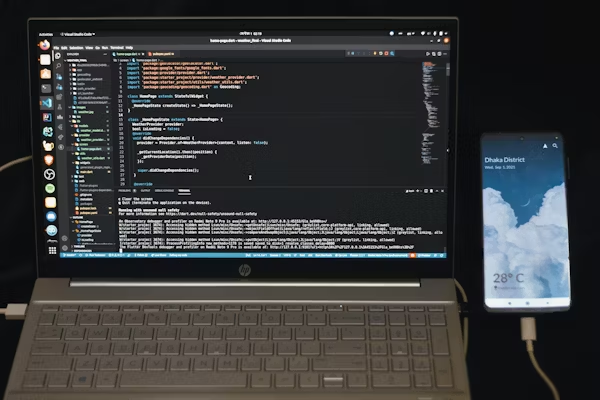
In the rapidly evolving world of technology, it’s not uncommon for software to rise in popularity and then gradually decline. But when users begin to ask whether software doxfore5 is dying, it raises serious questions. What went wrong? Why is this happening? And what should users do if they still rely on this platform?
In this detailed and user-focused article, we’re going to explore the situation around software doxfore5 dying, including the signs of its decline, possible causes, its impact on users, and the smart next steps for those affected. Whether you’re a business owner, IT manager, or long-time user of Doxfore5, this guide will help you understand what’s happening and how to respond.
What Is Software Doxfore5?
Before diving into whether software doxfore5 is dying, we need to understand what it is. Doxfore5 is a software tool (likely focused on document processing, workflow management, or automation) that was once considered a reliable, mid-tier solution for small to medium enterprises.
It may not have been a household name like Microsoft Office or Google Workspace, but Doxfore5 carved out a space in a niche market. Over time, however, users started to notice red flags—fewer updates, weak customer support, and an increasingly outdated interface. And now, many are asking: Is software doxfore5 dying?
Signs That Software Doxfore5 Is Dying
Let’s explore the warning signs that have led many users to believe that software doxfore5 is dying.
1. Lack of Regular Updates
A healthy, active software product is one that evolves. Regular updates mean new features, bug fixes, and improved security. But in the case of Doxfore5, updates have become rare or nonexistent. This is one of the biggest red flags pointing toward software doxfore5 dying.
2. Shrinking User Community
Another strong signal is the shrinking user base. Online forums, community pages, and help groups that once discussed Doxfore5 actively are now almost silent. When users stop engaging, it’s usually because they’ve moved on — a sure sign that software doxfore5 is dying in real-time.
3. Poor Customer Support
Many users have reported that Doxfore5’s support team is slow to respond — or doesn’t respond at all. When support channels dry up, users are left to solve problems on their own, and that leads to further frustration. Poor support is often a symptom of a company winding down a product — and another indicator that software doxfore5 is dying.
4. Incompatibility with Modern Systems
If Doxfore5 can’t run smoothly on the latest versions of Windows, macOS, or modern browsers, that’s a big problem. Many have noted issues with compatibility, broken integrations, and security warnings. In a tech world that values speed and adaptability, incompatibility is another strong reason people believe that software doxfore5 is dying.
Why Is Software Doxfore5 Dying?
So what caused this decline? Let’s take a closer look at the possible reasons why software doxfore5 is dying.
1. Lack of Innovation
The tech industry never stands still. Products that once led the pack can quickly become outdated if they don’t innovate. Doxfore5 has lagged behind newer, smarter, more cloud-ready solutions. This failure to innovate is a major reason why software doxfore5 is dying today.
2. Stronger Competition
When powerful competitors enter the market offering better tools at lower prices, it’s difficult for older software to stay relevant. Cloud platforms like Zoho, Airtable, and Notion have pulled users away. The result? A dramatic decline in relevance, reinforcing the idea that software doxfore5 is dying.
3. Lack of Marketing & Branding
Unlike more successful tools that invest in user education and branding, Doxfore5 has struggled to stay visible. Without strong outreach or user onboarding, newer users simply don’t know it exists. This invisibility only fuels the belief that software doxfore5 is dying.
4. Unclear Product Roadmap
For users to stick around, they need to know that the product has a future. But Doxfore5 hasn’t clearly communicated where it’s heading. That silence — no newsletters, no new feature announcements — adds to the feeling that software doxfore5 is dying, and that the company behind it may have shifted focus elsewhere.
The Impact of Software Doxfore5 Dying on Users
If you or your business still relies on Doxfore5, this shift can be unsettling. The phrase “software doxfore5 dying” isn’t just a tech headline — it’s a real-world problem that affects operations, workflows, and employee productivity.
1. Increased Risk of Data Loss
When a platform is in decline, there’s no guarantee that your data will be preserved. If the company discontinues the product or shuts down servers, your files or workflows might vanish. This is why software doxfore5 dying is a serious concern for long-time users.
2. Workflow Disruption
Sudden crashes, broken integrations, and bugs can throw your operations into chaos. Teams may waste hours trying to fix problems or switch to manual processes. As software doxfore5 is dying, users are forced to patch things together — and productivity suffers.
3. Cost of Switching
Transitioning to a new tool isn’t free. There are costs involved in migration, training, setup, and potential data conversion. However, staying on a dying platform can cost even more in the long run. Knowing that software doxfore5 is dying gives users a chance to plan their switch carefully, before they’re forced into it.
What Should You Do If You Still Use Doxfore5?
If you’re one of the many who still rely on Doxfore5, don’t panic — but don’t wait either. Here are smart steps you can take now that signs point to software doxfore5 dying:
1. Backup Your Data
Start by backing up all your data regularly. If software doxfore5 is dying, the worst-case scenario is total data loss. Backing up gives you control no matter what happens next.
2. Explore Alternative Platforms
Look for modern platforms that match or improve on Doxfore5’s features. Some popular document and workflow tools include:
- Airtable
- ClickUp
- Asana
- Notion
- Trello
- Microsoft Power Automate
Research these platforms now, so you’re not scrambling later. Knowing that software doxfore5 is dying, it’s smart to stay a step ahead.
3. Create a Transition Plan
Create a plan for moving your operations to a new platform. Prioritize mission-critical processes and assign timelines. If possible, run both tools in parallel for a short period to ensure nothing breaks.
4. Train Your Team
Make sure your employees or collaborators are trained on the new platform before you fully transition. If software doxfore5 is dying, team readiness will be the difference between chaos and continuity.
Could Software Doxfore5 Be Saved?
Is there a chance of revival? Could this be a false alarm? Technically, yes — there have been software tools that made comebacks through acquisitions, community forks, or open-source development.
But as of now, with all signs pointing to software doxfore5 dying, there is no public indication of such a turnaround. Unless the developers release a public roadmap or announce a major update, users should treat the decline as real.
Lessons from the Doxfore5 Decline
Even if you don’t use Doxfore5, this story offers valuable lessons about tech tools and digital strategy:
- Choose software with a clear future.
- Backup all your data — regularly.
- Avoid relying too heavily on any single tool.
- Keep learning and stay adaptable.
By staying alert, you’ll avoid being caught off guard when the next “software doxfore5 dying” moment comes around — and believe us, there will be others.

Conclusion: Prepare Today, Thrive Tomorrow
The phrase “software doxfore5 dying” isn’t just a rumor anymore — it’s backed by real-world signs like poor support, fewer updates, user loss, and incompatibility. If you still rely on this platform, now is the time to take action. Back up your data, explore alternatives, train your team, and develop a smooth transition plan.
Technology changes fast. The best way to survive — and thrive — is to stay ahead of it.
Remember: You’re not just replacing a tool. You’re future-proofing your work.





